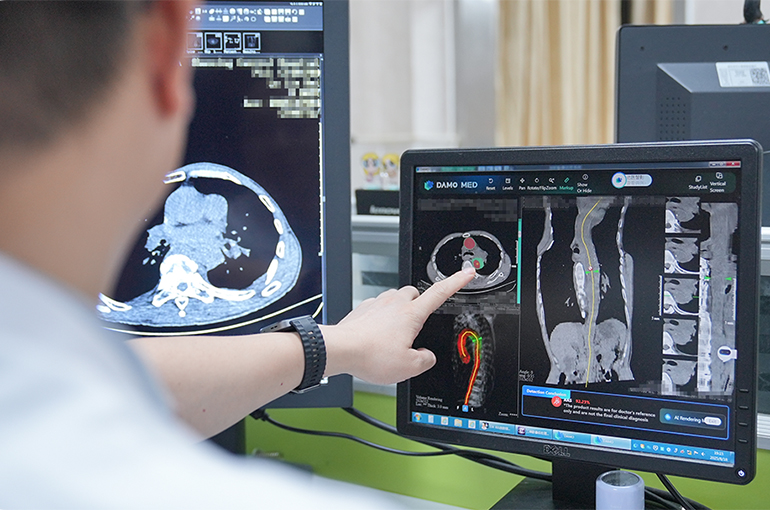 Alibaba, Tencent’s Medical AI Models Break Into Critical Care
Alibaba, Tencent’s Medical AI Models Break Into Critical Care(Yicai) Sept. 4 -- Medical artificial intelligence models released by Alibaba Group Holding, Tencent Holdings and other Chinese tech giants have, after several rounds of upgrades, started to enter the heart of clinical medicine, namely the treatment of critically ill and emergency patients, and are no longer limited to acting as support tools.
Alibaba’s research institute DAMO Academy and the First Affiliated Hospital of Zhejiang University School of Medicine recently launched a large language model called iAorta, designed for use in chest pain emergencies. With iAorta, doctors can use a routine, non-contrast CT scan to identify acute aortic syndrome in seconds, cutting the diagnosis time to under two hours, according to results recently published in the medical journal Nature Medicine.
And Tencent’s Qiyuan Critical Care Model, which is the world’s first critical care AI model and was developed together with Shenzhen Mindray Bio-Medical Electronics, has already started to be rolled out in a number of hospitals. The LLM can put together a patient’s full medical picture in five seconds, predict trends using critical care reasoning and provide treatment recommendations.
Until recently, AI tools could not actually be used in clinical settings and were mainly limited to serving as virtual health assistants or to helping boost doctors’ efficiency, such as by automatically generating medical records. As of May, China had released nearly 300 medical LLMs, with more than half of them being used in healthcare services.
Both the iAorta model, designed to diagnose patients with chest pains in the Emergency Room, and the Qiyuan Critical Care Model, which is used in intensive care units, are being applied in the most essential part of medicine, namely the diagnosis and treatment of patients in critical condition.
“Most patients with acute aortic syndrome don’t have obvious symptoms, just vague chest or abdominal pain. That leads to a missed diagnosis rate of about 40 percent. With the support of AI, doctors just need to run an ordinary CT scan to see if there’s an aortic dissection. This is hugely important for clinical treatment,” Zhang Hongkun, director of the Vascular Surgery Department at the First Affiliated Hospital of Zhejiang University, told Health Insight. Around 40 percent to 50 percent of patients with acute aortic syndrome die within 48 hours of onset, making timely and accurate diagnosis crucial.
Likewise, at the 2025 World Artificial Intelligence Conference in July, AI medical service provider LAN Holding launched its flagship product, the ‘Digital Twin Clinical Platform and LAN-AI Agent for Critical Care Specialty,’ which can be used in three of the most important hospital scenarios, namely emergencies, surgeries and intensive care.
By inputting patient vital signs, lab results, imaging scans, medical records and device data, the LAN-AI Agent creates a “digital twin patient.” Doctors can then monitor this digital patient, predict risks, and get AI-generated diagnosis and treatment suggestions.
The AI model is already being piloted in several top-tier hospitals in China, including Fudan University’s Huashan Hospital and the Shanghai Municipal Hospital of Traditional Chinese Medicine.
Editor: Kim Taylor